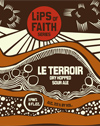By K. Florian Kemp Published May 2012, Volume 33, Number 2
 Jolly Pumpkin Oro de Calabaza
Jolly Pumpkin Oro de Calabaza
 New Belgium Le Terroir
New Belgium Le Terroir
 Russian River Sanctification
Russian River Sanctification
 Allagash Interlude
Allagash Interlude
Wild Style
The range of beers produced via wild fermentation is broad, but many are designed to emulate the Flanders sours and lambic, with the former being easier to create and the latter almost impossible. On the other hand, brewers are just as likely to infuse more traditional Belgian styles with feral organisms, creating a whole new genre of beers. Brown ales, resembling Belgian dubbels or quads, seem quite popular — the dark fruit, spicy and rummy nature marrying well with both sour and musty character. Golden ales and blonds are also well-represented, as are Belgian farmhouse-style brews, presenting a more austere expression of the wildness. A currently hot style, Belgian IPA, is sometimes made with a wild brett edge. Perhaps more black beers will find their wild side in the future.
To the earlier point of style, wild ales are all about fermentation and the influence of eccentric organisms. Most are sold in bottles, sequestering these wild characteristics and allowing them to work for long periods of bottle aging. Wild fermentation is sublime in the hands of a skilled brewer, and these beers can be enhanced further by aging in wine or spirit barrels.
North American brewers have always done things their own way, unafraid of the unknown. Perhaps they are beginning to carve out a legacy that emulates the Belgians’. There is a small cadre of breweries known for their wild offerings. Some are pioneers, and all are torchbearers. They are products of the microbrewing scene and have immersed themselves in this quirky corner of the market. Hardly reckless, they are well-schooled and inquisitive.
It will be quite interesting to see other inspirations this genre spawns. Certainly, the promise is great. There is no doubt that beer lovers are fully onboard. Calling these beers wild is not only appropriate, but also a fitting metaphor for the brewers who make them. These are wild times indeed.
K. Florian Klemp is an award-winning homebrewer and general hobbyist who thinks there is no more sublime marriage than that of art and science.
Tags: wild beer styles, wild beers
Tasting Notes
-
Jolly Pumpkin Oro de Calabaza
This Dexter, MI, brewery is small and unassuming, but thinks big in terms of cutting-edge brewing creativity. Many of its beers are ripe with the undeniable footprint of wildness, a product of open fermentation, barrel aging and bottle conditioning. Oro de Calabaza is recognizable as an excellent interpretation of the Belgian strong golden-ale style, accented with a crisp brett stamp. Bright gold, with a slight haze, it is peppery and herbal, with a delicate brett influence in the nose. Refreshingly light on the palate, the flavor is full of spicy yeast notes, floral noble hops, sweetish pale malt, faint citrus and a good dose of earthen must. The wildness in no way overshadows the base beer, serving as a firm complement instead. Oro finishes with a tannic and hop bitterness.
ABV: 8.0%%

-
New Belgium Le Terroir
Le Terroir is part of the popular and experimental Lips of Faith series from New Belgium Brewing in Fort Collins, CO. Le Terroir pours light coppery orange, slightly hazy, with a billowing beige froth. The Amarillo dry-hopping is front and center in the aroma, with tropical fruit followed by tart lemon, vinegar and a hint of funk. The flavor is quite tropical along with citrus, spicy herbs and a peppery yeast footprint. The light caramel malt sweetness is cut nicely by a firm and complex sourness and a rich tapestry of musty, wild notes. Le Terroir spends lots of time in wooden foeders full of flavor-enriching eager bugs before bottling, all of which leaves an imprint on this complex wild beer.
ABV: 7.5%%

-
Russian River Sanctification
The Russian River Brewing Co. in Santa Rosa, CA, takes a back seat to no one when it comes to producing wild beers in America. Sanctification is fermented entirely with brett, demonstrating the absolute depth, versatility and potential of these beguiling yeast strains, paradoxically mellow and funky, workhorse and jester. Sanctification pours bright golden, with a full, fleeting white head. It is finely carbonated, with a continuous stream of fine beads. The nose has light fruit and soft pinot grigio notes, lemon zest, and herbal hops. There is an omnipresent but mellow mustiness. The easy, pale malt sweetness is offset with a balanced hop bitterness. The finish is crisp and dry, almost Champagne-like, with high attenuation and bubbly briskness. Russian River makes an impressive assortment of wild beers, all of which are righteously coveted.
ABV: 6.75%%

-
Allagash Interlude
Perhaps no brewery in North America has a more stellar portfolio of Belgian-style brews than does Allagash Brewing Co. of Portland, ME. Interlude is a potent farmhouse beer, fermented primarily with a classic farmhouse strain and finished with Allagash’s house strain of brett. Some of it is then aged in sirah and merlot oak barrels. It has a brassy orange color with a big tenacious and lacy head. The aroma is full of spicy cinnamon heat, toasted malt, summer fruits and damp, woody must. The flavor combines wine and oak with sweetish malt and earthy funk. The mouthfeel is rather full and silky, but I recall the strength and am not surprised. Less attenuated than expected, the finish is smooth with a little lingering honey malt and medium carbonation. The brett punctuates the finish in excellent fashion. Interlude is one to savor, for sure.
ABV: 9.5%%














